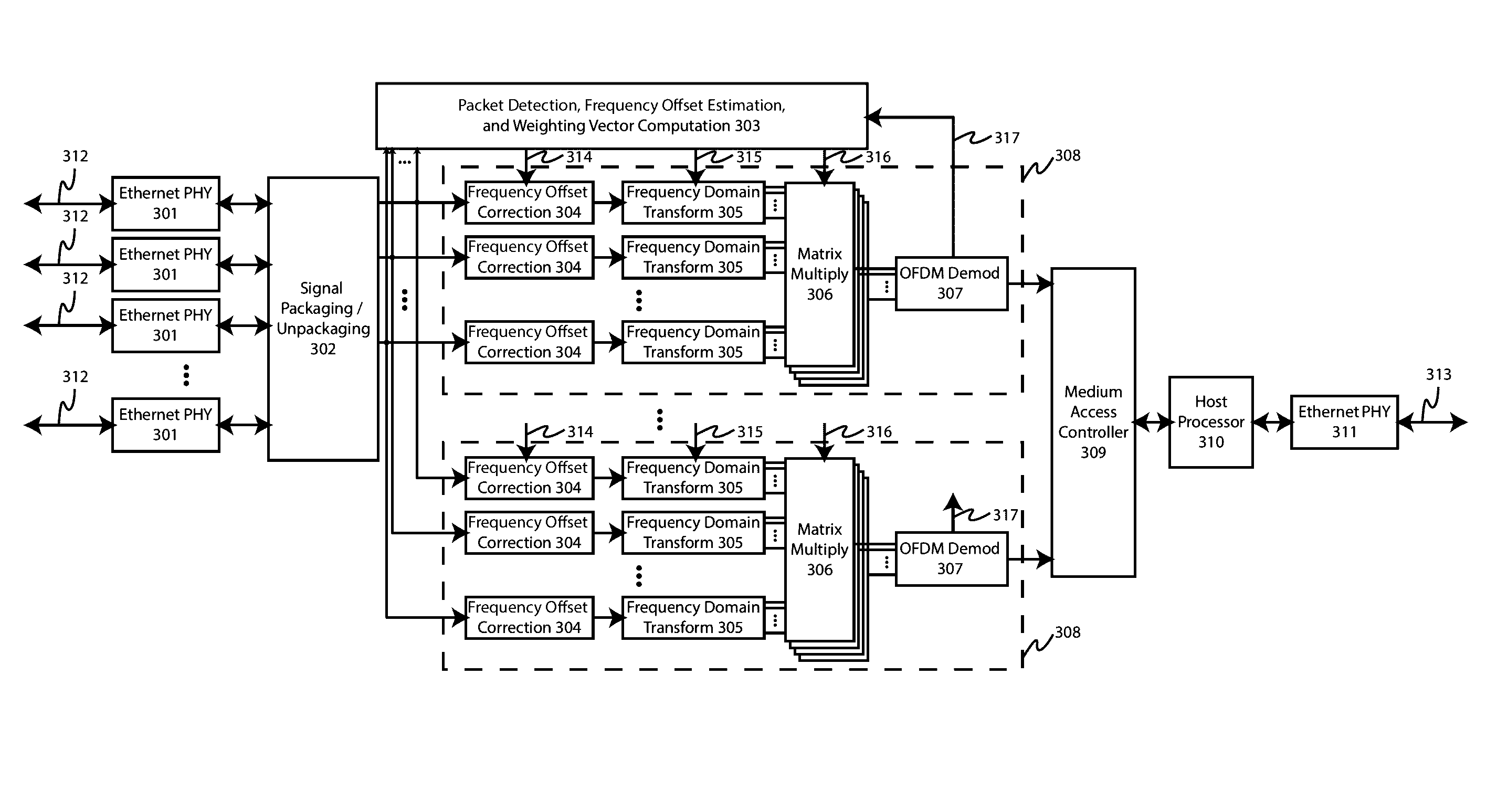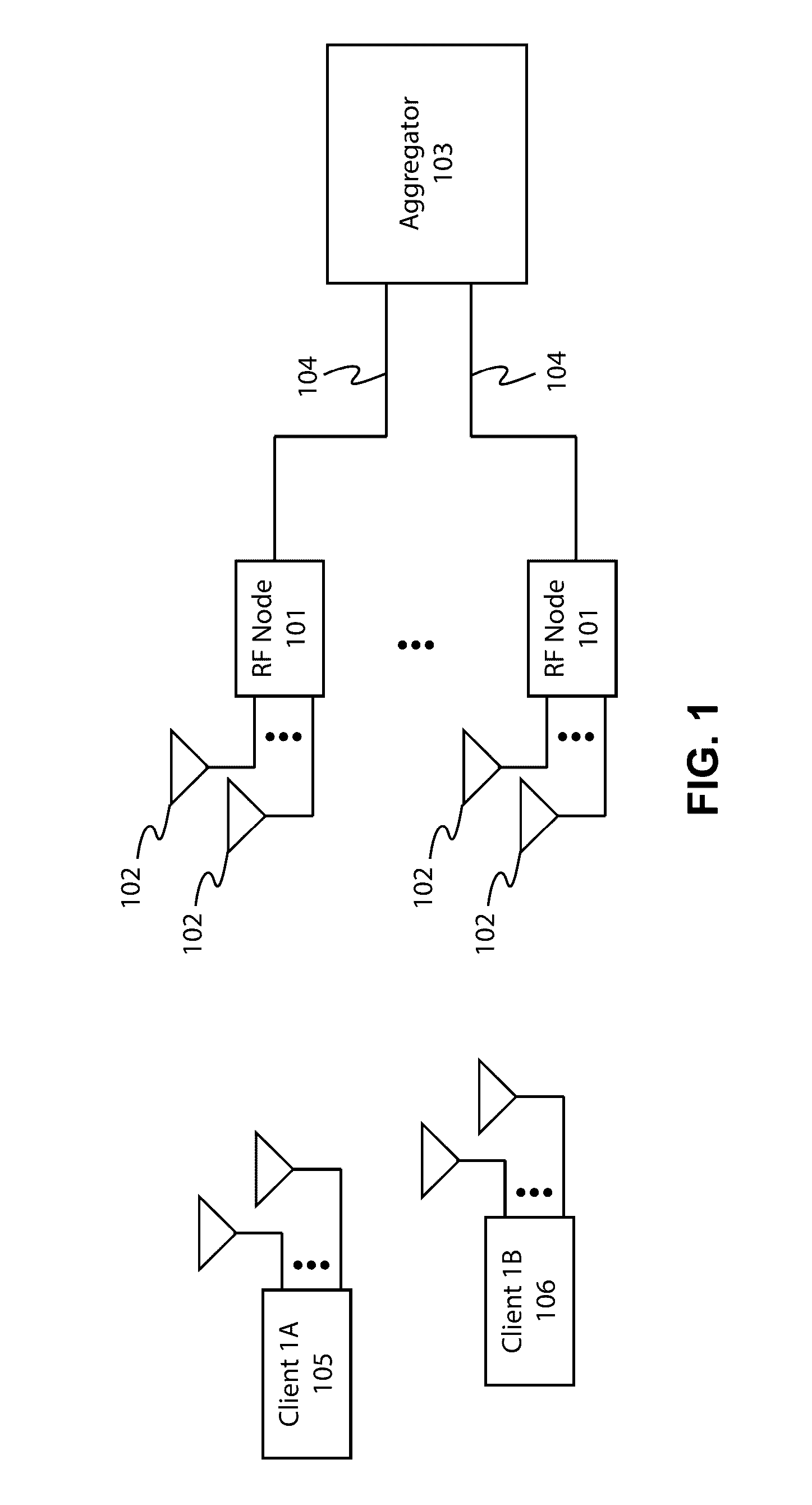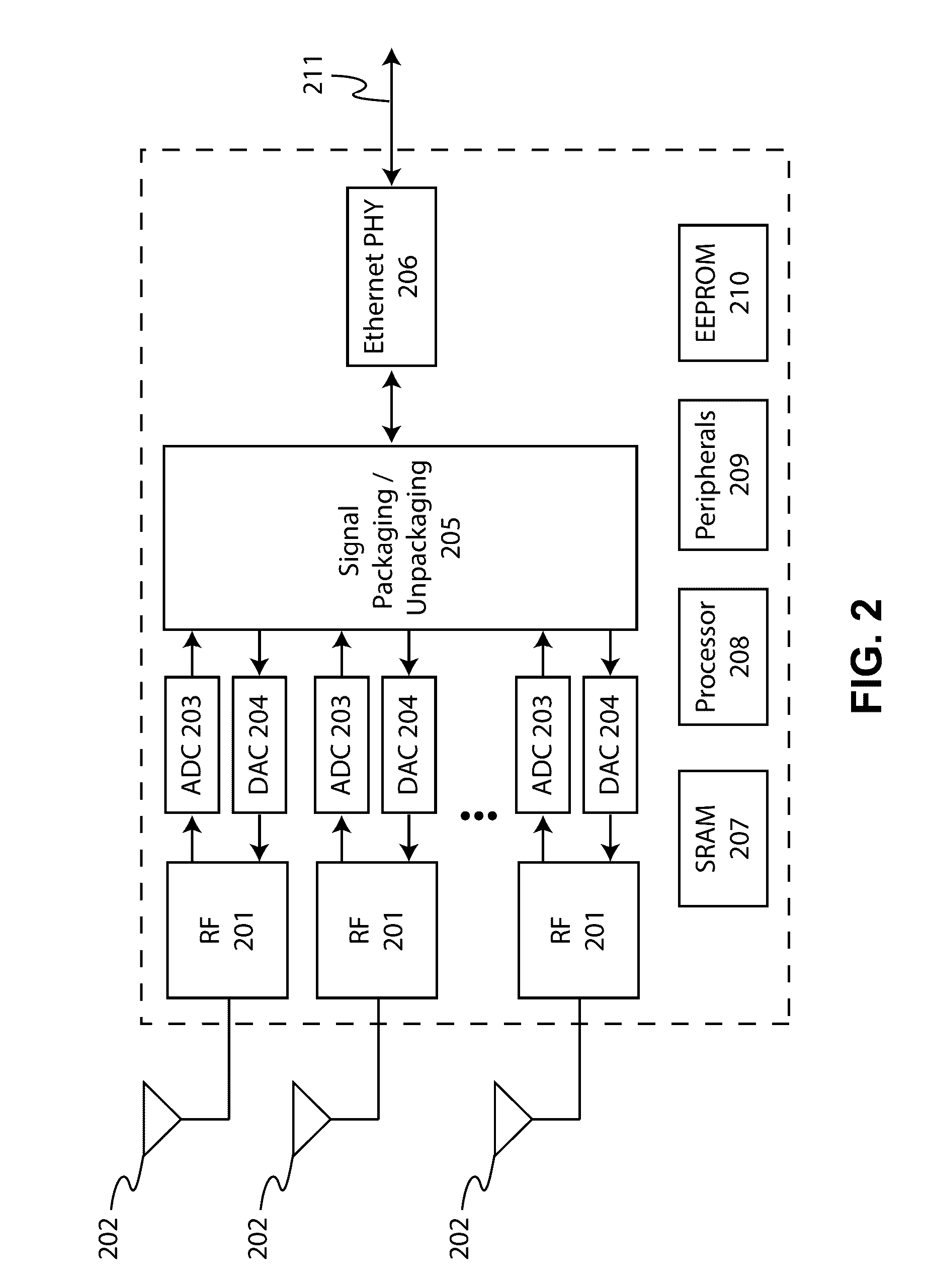System and methods for simultaneous communication with multiple wireless communication devices
a wireless communication and wireless communication technology, applied in the direction of wireless communication, transmission path division, error prevention/detection by transmission repeat, etc., can solve the problem that only one device could transmit at once, information is generally lost, and wlan aps are often limited in practice, so as to achieve tight frequency alignment and tight timing control
- Summary
- Abstract
- Description
- Claims
- Application Information
AI Technical Summary
Benefits of technology
Problems solved by technology
Method used
Image
Examples
Embodiment Construction
[0030]Embodiments of the present invention generally relate to the field of wireless communications. Specifically, some embodiments of the present invention relate to systems and methods for allowing simultaneous communication with multiple wireless local area network (WLAN) client devices to provide throughput and reliability enhancements in environments with a high density of client devices. Embodiments of the present invention have advantages to overcome the performance limitations of conventional WLAN architectures including the ability to receive multiple uplink (UL) signals from different client devices simultaneously without any a-priori channel information, the ability to effectively transmit information to one or more client devices while simultaneously receiving information from one or more other client devices, and the ability to substantially increase the number of simultaneous UL and downlink (DL) information sets that may simultaneously be transmitted and received in c...
PUM
 Login to View More
Login to View More Abstract
Description
Claims
Application Information
 Login to View More
Login to View More - R&D
- Intellectual Property
- Life Sciences
- Materials
- Tech Scout
- Unparalleled Data Quality
- Higher Quality Content
- 60% Fewer Hallucinations
Browse by: Latest US Patents, China's latest patents, Technical Efficacy Thesaurus, Application Domain, Technology Topic, Popular Technical Reports.
© 2025 PatSnap. All rights reserved.Legal|Privacy policy|Modern Slavery Act Transparency Statement|Sitemap|About US| Contact US: help@patsnap.com



